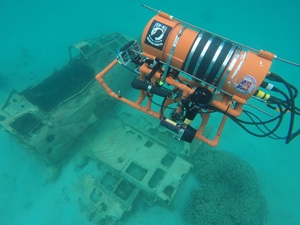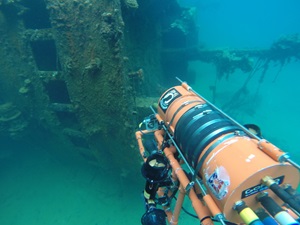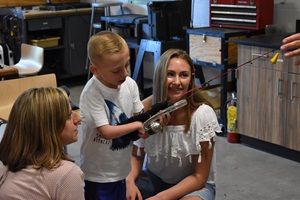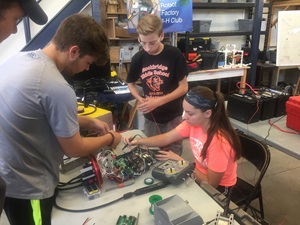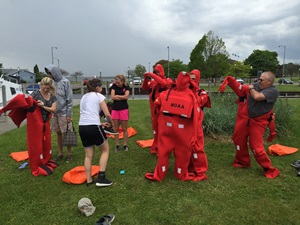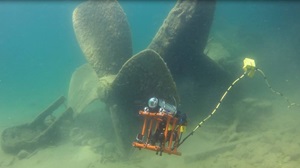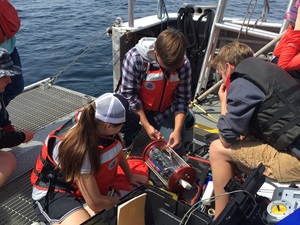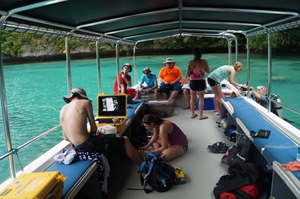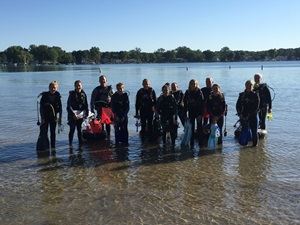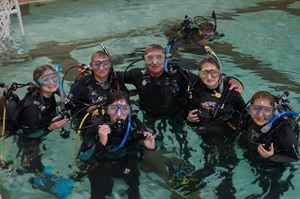Getting to the bottom of a South Pacific marine ecosystem
STEM students from Michigan will use underwater robotics to collect invaluable data in American Samoa
First, they’ll be traveling nearly 7,000 miles.
Then, they’ll be going deep—really, really deep—for research that could help create a more sustainable marine habitat in the South Pacific.
Since 2010, business and technology teacher Robert Richards and his STEM students at Stockbridge Community Schools—known as the Stockbridge InvenTeam—have been making a positive impact on the world using underwater robotics and STEM education.
And in November, they’ll be taking the plunge into uncharted territory, using an ROV and a baited underwater camera system to explore and document the marine ecosystem in American Samoa.
“We’ve never gone 300 feet deep before. The deepest we’ve ever got was about 200 feet during our ROV work in Palau (Micronesia),” says Richards from the Stockbridge InvenTeam’s south-central Michigan headquarters. “So it’ll be a new depth record for our students.”
Twelve of Richards’ students will visit the National Marine Sanctuary of American Samoa in November and December. There, they’ll put a capstone on 10 months of work by STEM junior and senior high school students at the school by:
- Conducting a bottom fish study around Anu’u Island, using an ROV with a live camera feed;
- Attempting to collect video of 12-inch-long Palolo worms during annual spawning season; and
- Using an ROV, equipped with temperature sensors, to search for a geothermal vent under the sea floor; and
- Partnering with students and teachers in American Samoa to learn about marine technology in the sanctuary.
“We’re hoping to develop baseline data for bottom fish in the area that can help establish long-term fisheries management plans,” says Richards. “As for the Palolo worms, we’re going to try and catch video of them coming out of their burrows at night. That’s never been done before.”
Image gallery: Stockbridge InvenTeam
In previous years, members of the Stockbridge InvenTeam have harnessed innovation and technology—and developed 21st-century STEM skills—in the areas of 3-D printing, advanced manufacturing, biomedical engineering and underwater robotics. Projects have included:
- Searching for missing-in-action Second World War aircraft at the bottom of the ocean in Palau, Micronesia;
- Creating prosthetic hands for patients in Haiti;
- Searching the Great Lakes for famous submerged vessels like the Christmas Tree Ship and P-39s flown by the Tuskegee Airmen; and
- Creating an adaptive fishing pole for Ezra, a local boy who suffered a stroke at birth.
Enbridge is committed to improving quality of life in the communities near our operations. In 2017, we invested more than $400,000 in community-strengthening initiatives across Michigan, and our recent $10,000 donation to Stockbridge InvenTeam is helping to build a sonar system for the students’ ROV.
Underwater video footage from the Stockbridge InvenTeam has been used by the Discovery Channel’s Daily Planet program and the Bent Prop Project, and taken home awards from the San Francisco International Film Festival.
“The kids, really, are just amazing,” says Richards. “They’ve got a genuine interest in science. They’re turned loose with their imaginations, and challenged with various projects to work at. At the end of the day, we’ve really made a name for ourselves.”




